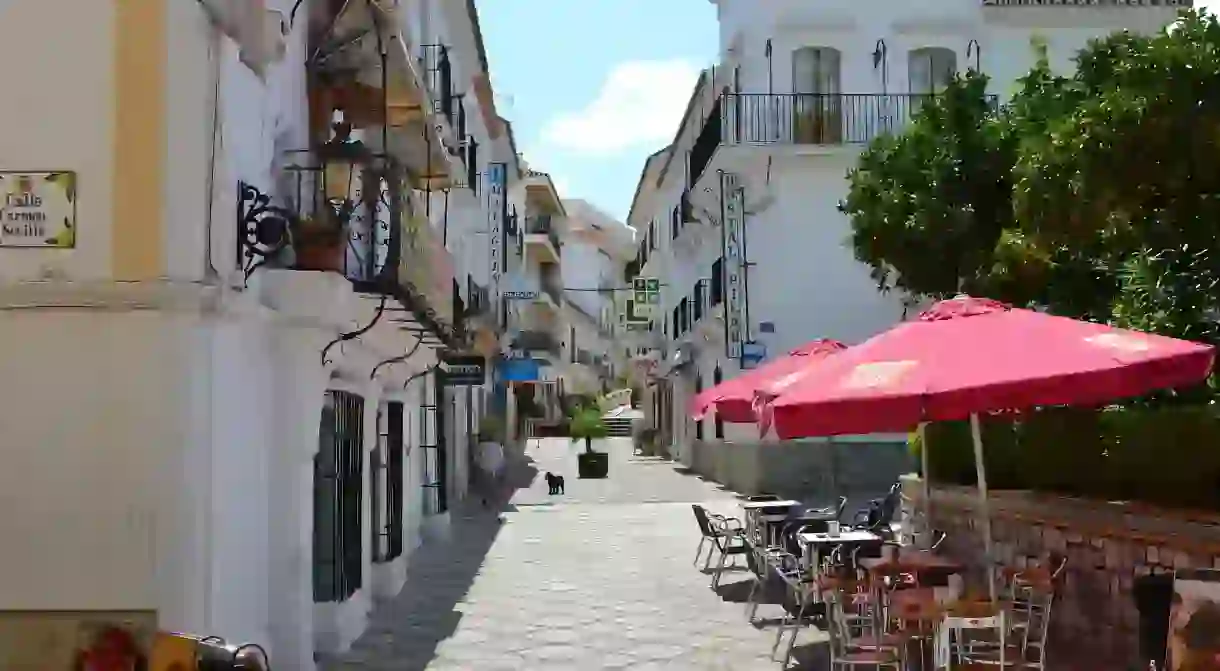Top 10 Things to See and Do in Estepona

The whitewashed former fishing village of Estepona in Spain is one of the Costa del Sol‘s most enchanting destinations. Even better, the fact that it’s often overlooked in favour of nearby Marbella means you can discover its charms in peace and quiet. Here are the top ten things to see and do in Estepona.
Old Town
There’s no better way to acquaint yourself with Estepona’s singular charm then by getting lost in its oldest quarter, which extends northeast from the beach to the Avenida Andalusia and west to Avenida Juan Carlos I. Its pristine cobbled streets are lined with whitewashed houses, the façades of which are attractively adorned with colourful flower pots. And because of Estepona’s relative obscurity, you can enjoy them in peace and quiet, savouring its unmistakably Andalausian beauty as you wander.
Plaza de las Flores

Orchid House
Apartment
Archaeological Museum
Building, Museum

Playa Rada
Bullring
Market
Bullfighting Museum
Though more controversial than ever, bullfighting is still an integral part of Andalusian culture. You can acquaint yourself with some of the history of this complex art form with a visit to the excellent bullfighting museum in Estepona’s bullring; here, you’ll find a range of artefacts and instruments from the world of the bulls well as elaborate trajes de luces – ‘suits of lights’ – that have been worn by some of Spain’s most important matadors. Entry is free.
Paleontology Museum
Estepona’s characterful bullring also houses the Paleontology Museum, which displays one of the largest fossil collections in Europe. Of notable importance are its sirenian (‘sea cow’) fossil – the only one to have been found in Andalusia – and its collection of echinodrens (sea urchins) from the bed of the Guadalquivir river. The latter features one of the largest sea-hedgehogs ever found in Spain. Amongst its 1,200 species of marine invertebrates are also some of the oldest fossils ever to have been unearthed in Estepona. Entry is free.

Ethnographic Museum
This intriguing collection of more than 2,000 pieces explores the two industries that have shaped Esteponian culture over the centuries – namely, agriculture and fishing. It is split over several themed rooms, each of which displays tools and early machinery used to ply trades such as beekeeping, threshing, the rearing of livestock, forging and fishing. As with the museums mentioned above, it is located in the bullring, and entry won’t cost you a cent.
Seafood restaurants
Whether you’re after tapas or a full meal, you’ll enjoy some of the freshest and best-cooked fish for miles around in Estepona, a town that boasts some of the finest seafood restaurants in Andalusia, if not the Mediterranean. These are scattered along Playa Rada and a little further west on Estepona’s port, but two of the best are La Escorella – where the fish is thrown on to the grill pretty much straight off the boat – and El Pescador, which does a mean paella and huge mussels.
Restaurante La Escorella – Calle Puerto Pesquero, Estepona, Spain, +34 952 80 63 54
Restaurante El Pescador – 1 Avenida España, Estepona, Spain, +34 952 80 43 93














